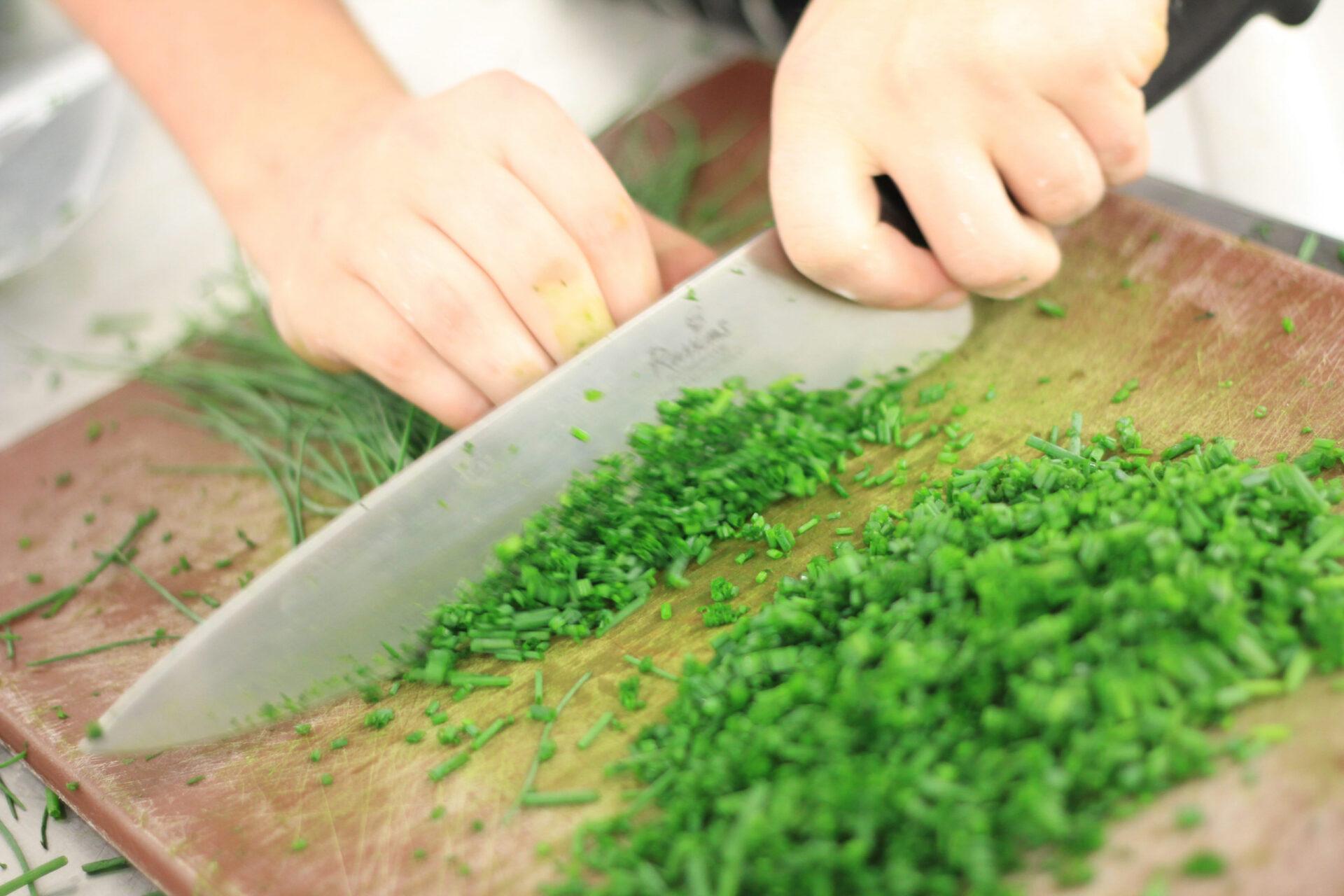 I don’t know about you, but when I sprinkle chives on my baked potato or omelet, I do it for the flavor and the punch of color. I don’t make an effort to eat chives for their health benefits — and that’s a mistake.
I don’t know about you, but when I sprinkle chives on my baked potato or omelet, I do it for the flavor and the punch of color. I don’t make an effort to eat chives for their health benefits — and that’s a mistake.
Chives are incredibly healthy. Since they pair beautifully with egg and seafood dishes, and also can be added to dips, salads, sandwiches and soups, it’s pretty easy to tap into their health perks.
Chives contain some beneficial vitamins, minerals and antioxidants, including:
- Vitamin A, which is essential for vision health and preventing age-related macular degeneration.
- Vitamin C, which is crucial to bone and tissue health, as well as acting as an antioxidant that destroys free radicals.
- Vitamin K and calcium, which help keep bones dense and healthy.
- Folate, which is crucial to the health of our DNA and cells.
- Lutein and zeaxanthin, both carotenes which, like Vitamin A, contribute to eye health.
- Several essential nutrients including magnesium, phosphorus, potassium, iron, copper and choline.
- Fiber, which has a vital role in weight loss and digestive health.
Like other members of the allium family (which includes onions, garlic, scallions, shallots and leeks), chives contain enzymes that convert to a chemical compound called allicin once the leaves are cut or crushed. Allicin can decrease cholesterol levels and blood pressure for improved heart health, and it also has antimicrobial/antibacterial properties.
How to Grow Chives Indoors
Chives are hardy, drought-tolerant, and easy-to-grow perennials. Even here in bone-chilling Zone 3, my garden chives come back each spring and require little care during the growing season. That said, chives are also well-suited to growing indoors. They do well in pots, need only six hours of sunlight daily, and — as cool-season, cold-tolerant herbs — they can handle cold windowsills during the winter months.
It’s easiest just to start chives in the same pot you intend to let them grow. Choose a container that’s about 6-8 inches across. Since chives do best in well-drained soil, make sure the pot has good drainage holes. If you’re reusing a garden pot from last season or repurposing a container, take a few minutes to disinfect the pot with a 1:9 bleach and water solution to prevent pathogens from transferring to your young chive plants.
As when growing other herbs and vegetables indoors, use a light potting soil mix, which will ensure proper drainage and air circulation for the roots/bulbs. Pre-moisten the soil and let it drain so that it’s damp but not wet. When you’re ready to plant, sprinkle the chive seeds on the moist soil and then lightly spread about one-fourth an inch of moist soil over the seeds.
It can take up to two weeks for chive seeds to germinate. Be patient and keep the soil moist while you wait.
Once you have chive seedlings, place the pot in a sunny window where it will receive at least six hours of daylight. Turn the pot regularly to encourage even growth. In the depths of winter, or if you don’t have a sunny window, sunlight can be supplemented with grow lights.
You can harvest chive leaves once they’re about six inches long. When you’re ready to use them, cut the leaves off about 1-2 inches from the base of the plant. Not only will leaves regenerate, but cutting back chives helps improve plant health and vigor.
If you harvest chive leaves regularly, a light application of a weak fertilizer once or twice a month will help the chives continue to regenerate. Also, if you’ve grown chives indoors over the winter, fertilize them lightly with a low dose of organic fertilizer or a weak compost tea when the days start getting longer and your chive plant will respond by growing more vigorously. Be careful to not over-fertilize chives, as that can weaken their flavor.
Common Chives vs. Garlic Chives
Common chives are very similar to green onions, with slender, hollow, tubular stalks and an onion flavor. The Grolau variety of common chives was developed specifically for indoor gardening and is an excellent choice to grow in containers. Garlic chives are flat, like blades of grass, and they have a mild garlic flavor. Be prepared, though, and plant garlic chives in a slightly larger pot, since they grow taller than common chives.
Have you ever grown chives indoors? If so, let us know your tips or tricks for keeping your indoor chive plant happy and producing.
 Off The Grid News Better Ideas For Off The Grid Living
Off The Grid News Better Ideas For Off The Grid Living



